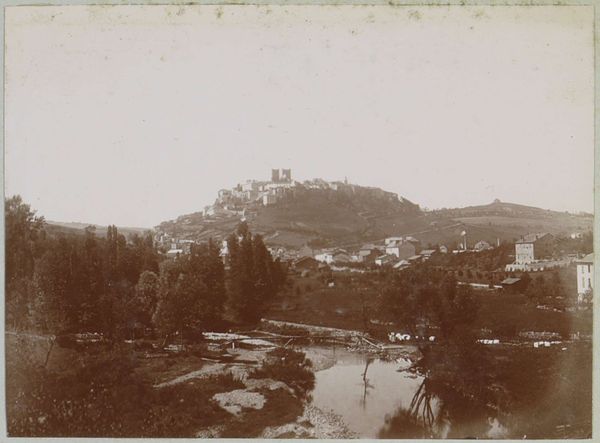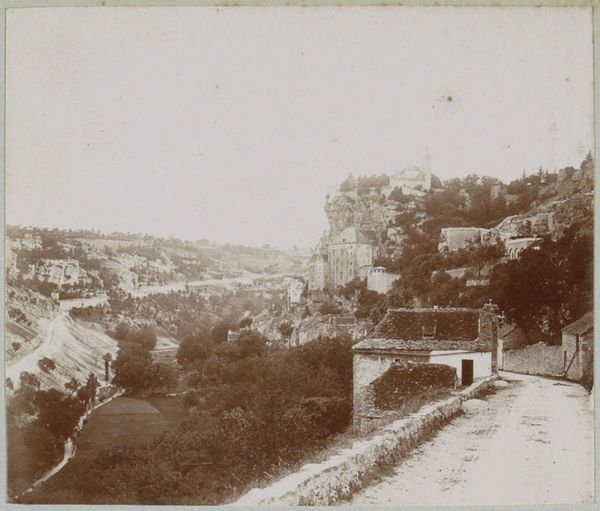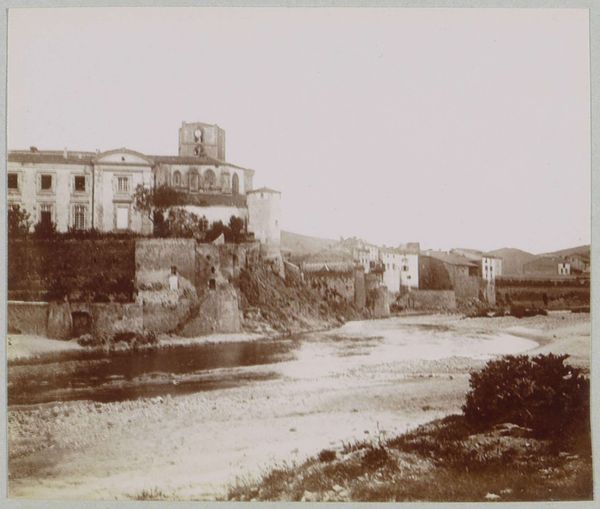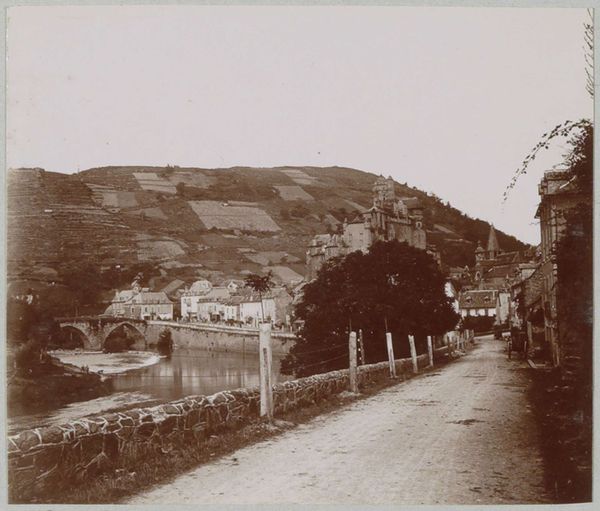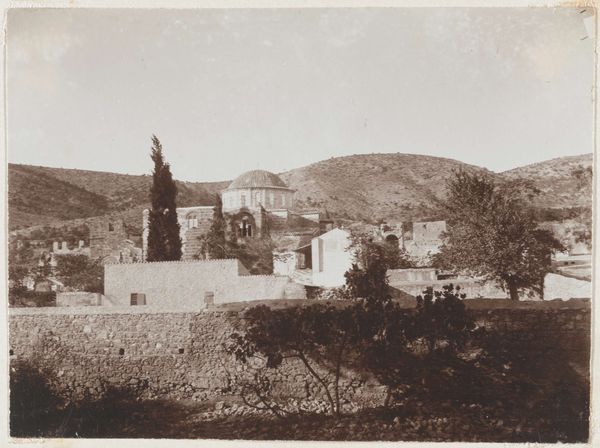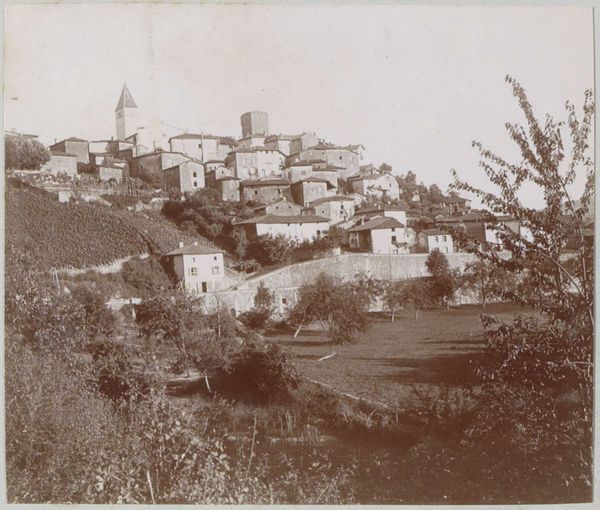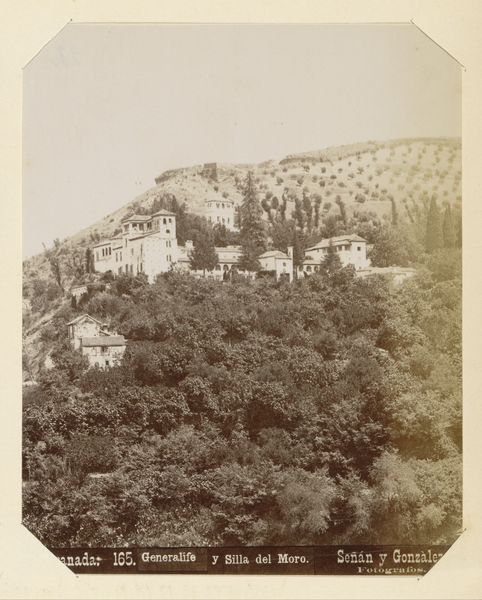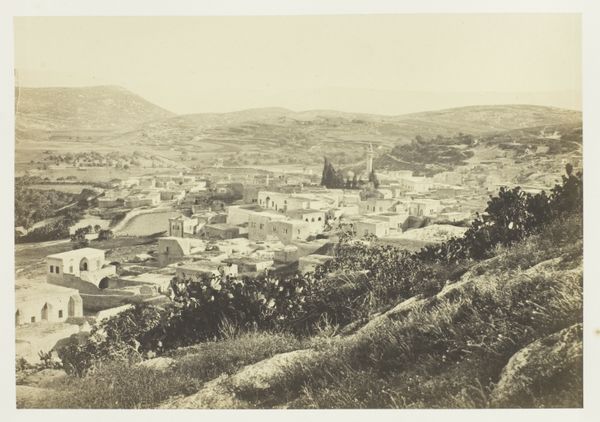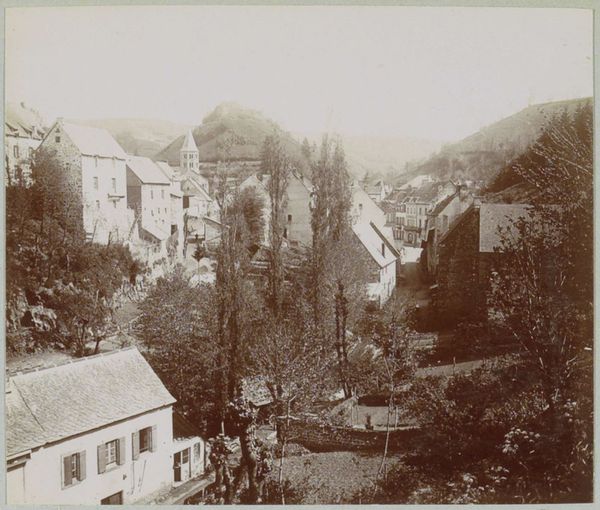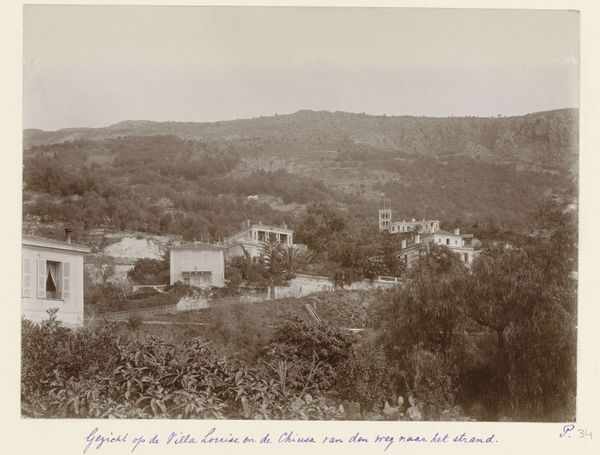
Gezicht op Saint-Nectaire met linksboven de Notre-Dame-du-Mont-Cornadore 1903
0:00
0:00
photography, albumen-print
#
landscape
#
photography
#
cityscape
#
albumen-print
#
realism
Dimensions: height 70 mm, width 82 mm
Copyright: Rijks Museum: Open Domain
Editor: This is a photograph entitled "Gezicht op Saint-Nectaire met linksboven de Notre-Dame-du-Mont-Cornadore," taken in 1903, an albumen print by Delizy. I’m struck by the contrast between the grand cathedral perched atop the hill and the seemingly humble village nestled below. It feels like a visual representation of societal power structures. How do you read this image? Curator: That’s a brilliant starting point. Considering Delizy's photographic lens in 1903, what statement do you think they're making about religion or class in French society? Is it glorifying the church or, perhaps more subtly, pointing to an imbalance? The composition positions the church, a historical site of immense power, visibly dominating the landscape, quite literally looking down upon the town. Editor: So you're saying the very placement of the camera and the framing might be a political statement? I hadn’t considered it so directly. It feels so… neutral. Curator: That apparent neutrality is key! How might a seemingly objective representation like this, made accessible through photography, actually reinforce existing social hierarchies by normalizing them? Think about who would have had access to photography at this time, and what narratives they might have wanted to promote. Editor: I suppose the act of choosing to capture this specific scene, with that dramatic power dynamic, wasn’t neutral at all. Photography wasn’t as democratized as it is now, so it makes sense the photographer would've probably been among the upper class, reinforcing their worldview. Curator: Precisely! And thinking intersectionally, how might ideas about gender, local identity, and French national identity play into this tableau? Are there silences in the image, perspectives not represented? Editor: That's fascinating; it makes me think about who isn't in the photograph. I’ll have to look more closely at photography through a lens of social power. Curator: Exactly, questioning visual narratives brings a fresh perspective, especially within an historical context. I have new ways to consider the choices, like what to show, who can access and interpret these images, what to believe…
Comments
No comments
Be the first to comment and join the conversation on the ultimate creative platform.
